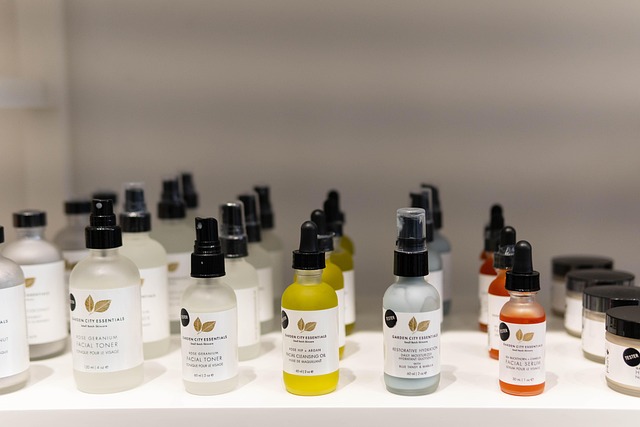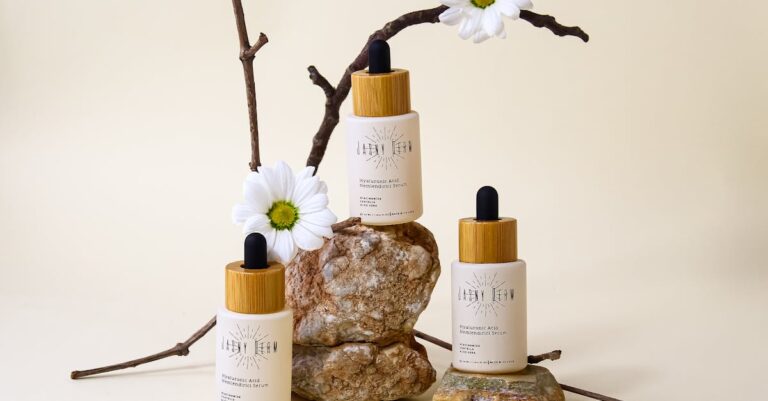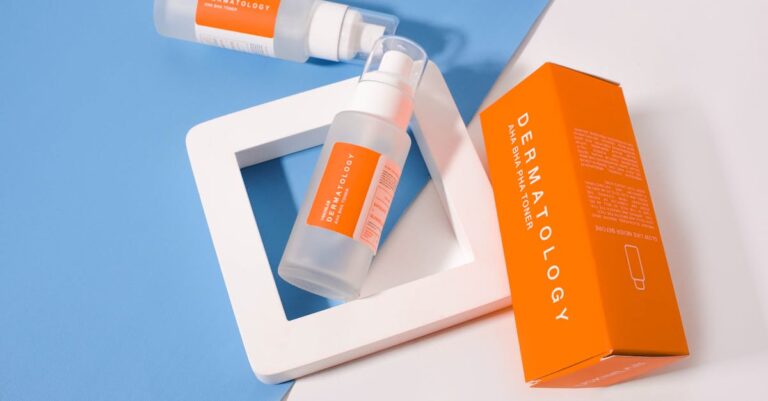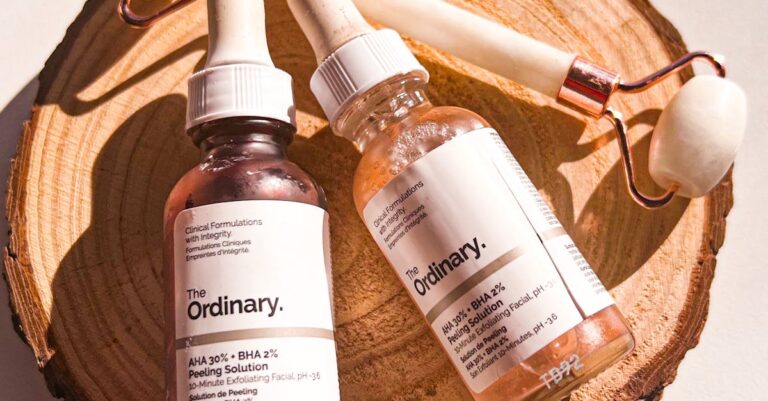The world of skincare can feel like decoding a foreign language—especially when you flip over a product and find a list of unfamiliar ingredients promising glowing, smooth, youthful skin. But at the heart of every effective product lies a group of key players: active ingredients.
Active ingredients are the scientifically-backed compounds in your skincare products that directly target specific skin concerns—whether that’s acne, dryness, hyperpigmentation, or signs of aging. They’re the “doers,” the ingredients with a purpose beyond just making your skin feel nice.
Understanding what these ingredients do, how they work, and how to use them can totally transform your skincare routine. Instead of guessing or falling for hype, you’ll be able to choose what actually works for you. This guide breaks down the most common (and most powerful) active ingredients used in skincare today—what they are, what they do, and how to use them wisely.
Whether you’re just starting your skincare journey or looking to level up your knowledge, this article will help you read between the labels and get the results you’re looking for.
What Are Active Ingredients?
Active ingredients are compounds in skincare formulations that have proven effects on the skin. Unlike inactive ingredients (which help with texture, preservation, or delivery), actives work to treat specific skin concerns. Using the right active ingredients can significantly improve your skin, but incorrect use can lead to irritation or ineffective results.
How Active Ingredients Work
Before diving into the specifics of each ingredient, it’s helpful to understand how active ingredients actually interact with your skin. Think of your skin as a barrier—its job is to keep the good stuff in and the bad stuff out. So when you apply an active ingredient, it has to be formulated in a way that lets it penetrate that barrier and reach the layers where it can do its job.
Penetration and Absorption
For an active to be effective, it needs to:
- Reach the layer of skin where the targeted issue exists (e.g., acne in pores, wrinkles in the dermis).
- Be stable enough to survive exposure to air, light, and water until it gets there.
- Be in a formulation with the right pH level and molecular size to be absorbed.
For example, Vitamin C (ascorbic acid) is most effective in a slightly acidic environment and in certain stabilized forms to avoid oxidizing before it reaches your skin.
Concentration Matters
More isn’t always better. The effectiveness of an active often depends on:
- The concentration (measured in percentages, like “2% salicylic acid” or “10% niacinamide”).
- The delivery system (serum vs cream vs toner).
- How well it plays with the rest of your routine.
Too much of a strong ingredient can irritate or even damage the skin barrier—especially when you’re starting out. Formulation is Key
The formula surrounding the active—called the vehicle—is critical. The same ingredient can perform very differently depending on whether it’s in an oil, gel, cream, or water-based solution. This is why one Vitamin C serum might deliver results, and another just…sits there.
Categorization of Active Ingredients
A. Hydrators & Humectants
These ingredients focus on hydrating the skin by drawing water into its upper layers and keeping it there. They’re great for all skin types, especially dry or dehydrated skin, and they often pair well with stronger actives to help minimize irritation.
1. Hyaluronic Acid
- What it does: A powerful humectant that can hold up to 1000 times its weight in water. It hydrates the skin, plumps fine lines, and improves elasticity.
- Best for: All skin types, especially dehydrated or dry skin.
- Tips: Apply to damp skin and lock it in with a moisturizer to prevent transepidermal water loss (TEWL).
2. Glycerin
- What it does: A classic humectant found in many moisturizers. It attracts moisture from the air and deeper layers of the skin to the surface.
- Best for: All skin types; gentle and non-irritating.
- Tips: Often used alongside other actives to reduce potential irritation.
3. Aloe Vera
- What it does: Soothes, hydrates, and calms irritation. Aloe is a natural humectant and also has anti-inflammatory properties.
- Best for: Sensitive, inflamed, or sun-damaged skin.
- Tips: Can be used in gel or serum form, especially in summer routines or post-exfoliation.
4. Urea
- What it does: A dual-action ingredient that hydrates and gently exfoliates (at higher concentrations). It also helps improve skin barrier function.
- Best for: Rough, flaky, or extremely dry skin (including conditions like eczema or psoriasis).
- Tips: Look for concentrations of 5–10% for hydration, 20–40% for exfoliation.
These ingredients are usually safe to use daily and can be layered with almost everything, making them a staple in any routine.
B. Exfoliants
Exfoliants help remove dead skin cells from the surface (or even from inside pores), which reveals brighter, smoother skin underneath. They can be chemical (using acids or enzymes) or physical (scrubs—though those are generally harsher). Here, we’ll focus on chemical exfoliants since they’re more targeted and effective.
1. AHAs (Alpha Hydroxy Acids)
- Common types: Glycolic acid, lactic acid, mandelic acid, citric acid.
- What they do: Gently dissolve the bonds between dead skin cells on the skin’s surface. AHAs also stimulate collagen production and improve texture.
- Best for: Dry, dull, uneven skin tone, or sun damage.
- Tips:
- Start with lower concentrations (5–10%).
- Use at night and always follow with SPF in the morning.
- Apply at night 2-3 times per week; avoid mixing with retinol.
2. BHAs (Beta Hydroxy Acid)
- Main type: Salicylic acid.
- What it does: Oil-soluble, meaning it can penetrate into pores to break down sebum and dead skin cells—perfect for unclogging and preventing acne.
- Best for: Oily, acne-prone, or congested skin.
- Tips:
- Usually well-tolerated, but can be drying.
- Look for 0.5–2% in over-the-counter products.
3. PHAs (Polyhydroxy Acids)
- Common types: Gluconolactone, lactobionic acid.
- What they do: Offer gentle exfoliation with added hydration, thanks to their large molecular size.
- Best for: Sensitive skin or those who can’t tolerate AHAs or BHAs.
- Tips:
- Non-irritating and ideal for daily use.
- Often combined with moisturizers or barrier-repair products.
4. Enzymatic Exfoliants
- Derived from: Fruits like papaya (papain) or pineapple (bromelain).
- What they do: Break down keratin proteins in dead skin cells without acids.
- Best for: Sensitive skin, gentle exfoliation needs.
How often to use exfoliants?
- 1–3 times a week for beginners.
- Don’t mix multiple exfoliants or layer them with other harsh actives unless you know your skin can handle it.
C. Antioxidants
Antioxidants are like bodyguards for your skin—they fight off damage from free radicals caused by UV rays, pollution, stress, and even blue light. Over time, free radical damage leads to premature aging, dullness, and hyperpigmentation. Antioxidants help prevent and repair that damage, making them essential for maintaining healthy, youthful-looking skin.
1. Vitamin C (Ascorbic Acid)
- What it does: Brightens skin, boosts collagen production, fades dark spots, and fights environmental damage.
- Best for: Dull, hyperpigmentation, early signs of aging.
- Tips:
- Look for concentrations between 10–20%.
- Stable forms include Ascorbyl Glucoside or Magnesium Ascorbyl Phosphate.
- Use in the morning under SPF for enhanced UV protection.
2. Vitamin E (Tocopherol)
- What it does: Moisturizes and strengthens the skin barrier while enhancing the effects of other antioxidants (like Vitamin C).
- Best for: Dry, damaged, or aging skin.
- Tips:
- Often paired with Vitamin C and Ferulic Acid.
- Can help soothe irritation from stronger actives.
3. Niacinamide (Vitamin B3)
- What it does: Multi-tasking superstar. Evens skin tone, minimizes pores, regulates oil, reduces inflammation and redness, strengthens the skin barrier, and enhances hydration.
- Best for: All skin types—especially oily, sensitive, or acne-prone.
- Tips:
- Works well with almost every other active.
- Effective at 2–10% concentration.
4. Coenzyme Q10 (Ubiquinone)
- What it does: Neutralizes free radicals and supports skin’s natural repair process. Helps firm and energize tired-looking skin.
- Best for: Aging or stressed skin.
- Tips:
- Often found in anti-aging creams and serums.
- Lightweight and layer-friendly.
5. Ferulic Acid
- What it does: Stabilizes other antioxidants like Vitamin C and E while boosting their effects. Protects against environmental stressors.
- Best for: All skin types when paired with other antioxidants.
- Tips:
- Look for it in combination serums (e.g., Vitamin C + E + Ferulic Acid).
When to use antioxidants?
- Most antioxidants work well in the morning to help guard against daytime environmental damage. They’re also safe for daily use.
D. Anti-Aging & Collagen Boosters
This group of actives is all about slowing the clock, boosting collagen production, smoothing fine lines, and improving firmness. They target the deeper layers of the skin where aging begins and can make a big difference in overall texture and elasticity.
1. Retinol (Vitamin A) & Retinoids
- What they do: Speed up cell turnover, stimulate collagen, fade pigmentation, smooth fine lines, unclogs pores, and treat acne.
- Best for: Aging skin, acne-prone skin, and those looking to improve skin texture.
- Forms: Retinol (OTC), Retinaldehyde, Retinyl Palmitate (milder), Tretinoin (Rx).
- Tips:
- Start with a low concentration (0.25–0.5%) at night, 2-3 times a week, and build up slowly.
- Always apply at night and follow with moisturizer.
- Must use SPF during the day—retinoids increase sun sensitivity.
2. Peptides
- What they do: Signal the skin to produce more collagen and elastin. Some also reduce inflammation or help with hydration.
- Best for: Early to advanced signs of aging, sensitive skin types who can’t tolerate retinol.
- Tips:
- Look for names like Matrixyl, Argireline, or copper peptides.
- Layer well with most other ingredients, including retinol.
- Can be used morning and night; works well with other anti-aging ingredients.
3. Bakuchiol
- What it does: A plant-based alternative to retinol that offers similar anti-aging benefits—stimulates collagen, smooths wrinkles, evens tone.
- Best for: Sensitive skin, pregnant individuals, or retinol beginners.
- Tips:
- Can be used both morning and night.
- Often found in combination with soothing ingredients like squalane.
4. Growth Factors
- What they do: Proteins that support skin regeneration, collagen synthesis, and wound healing.
- Best for: Mature skin, post-treatment skin (e.g., after microneedling or lasers).
- Tips:
- Look for human-derived or bioengineered growth factors.
- Often paired with peptides for enhanced firming.
Pro Tip: Start slow, be consistent, and focus on hydration while introducing any collagen-stimulating actives. Many of them (especially retinol) can cause temporary dryness or irritation in the beginning.
E. Brightening Agents
This category focuses on reducing hyperpigmentation, dark spots, dullness, and uneven skin tone. Whether from sun damage, acne scars, or melasma, these actives help restore a radiant, more even complexion.
1. Vitamin C (Ascorbic Acid)
- What it does: Inhibits melanin production, fades dark spots, and adds a healthy glow.
- Best for: Dullness, post-acne marks, sun spots.
- Tips:
- Already mentioned under antioxidants, but here’s the key: daily use can prevent pigmentation as well as treat it.
2. Niacinamide (Vitamin B3)
- What it does: Reduces melanin transfer, helping to even out skin tone and fade discoloration.
- Best for: Redness, blotchiness, and post-inflammatory hyperpigmentation.
- Tips:
- Works wonderfully in combo with Vitamin C or alpha arbutin.
3. Alpha Arbutin
- What it does: A gentler derivative of hydroquinone that inhibits melanin production.
- Best for: Melasma, sun spots, and uneven tone.
- Tips:
- Effective at 1–2% concentration.
- Safe for long-term use; often used twice daily.
4. Licorice Root Extract
- What it does: Soothes skin and inhibits tyrosinase (an enzyme involved in melanin production).
- Best for: Sensitive skin with redness or pigmentation issues.
- Tips:
- Often included in calming or post-acne formulations.
5. Kojic Acid
- What it does: Derived from fungi, it reduces melanin production similarly to hydroquinone.
- Best for: Stubborn dark spots or melasma.
- Tips:
- Use with caution—can be irritating to some.
- Often found in serums or creams used in evening routines.
How long do brightening agents take to work?
- Be patient! It can take 4–12 weeks to see visible improvement, depending on the severity of pigmentation and your consistency.
F. Acne-Fighting Agents
These actives target the root causes of acne: excess oil, clogged pores, bacteria, and inflammation. Whether you’re dealing with the occasional breakout or persistent acne, these ingredients can help clear things up and prevent future flare-ups.
1. Salicylic Acid (BHA)
- What it does: Penetrates deep into pores to dissolve oil and dead skin buildup, reducing blackheads and breakouts. Also has anti-inflammatory properties.
- Best for: Oily, acne-prone, blackhead-prone skin.
- Tips:
- Use 0.5–2% in cleansers, toners, or spot treatments.
- Don’t overuse—start with once a day or every other day.
- Use 2-3 times per week, either as a toner, serum, or spot treatment.
2. Benzoyl Peroxide
- What it does: Kills acne-causing bacteria (C. acnes) and helps clear out pores.
- Best for: Inflammatory acne (pustules, cysts).
- Tips:
- Use spot treatments or low-strength daily products (2.5–5% is usually enough).
- Can bleach fabrics—be careful with towels & pillowcases.
3. Retinoids (Retinol, Adapalene, Tretinoin)
- What they do: Increase cell turnover, unclog pores, and reduce acne over time.
- Best for: Persistent acne and clogged pores.
- Tips:
- Adapalene (Differin) is a great OTC retinoid for acne.
- Start slow and moisturize to prevent dryness and purging.
4. Niacinamide
- What it does: Reduces inflammation, regulates oil, and improves skin texture without being harsh.
- Best for: Mild to moderate acne, redness, and post-acne marks.
- Tips:
- Great for sensitive or combo skin.
- Pairs well with most acne treatments to reduce irritation.
5. Sulfur
- What it does: Reduces oil and bacteria while gently exfoliating.
- Best for: Whiteheads, blackheads, and sensitive, acne-prone skin.
- Tips:
- Often used in masks or spot treatments.
- Has a strong smell but is effective and gentle.
6. Tea Tree Oil
- What it does: Natural antibacterial and anti-inflammatory properties.
- Best for: Mild acne or occasional breakouts.
- Tips:
- Use diluted or in pre-formulated products to avoid irritation.
- Patch test before applying to large areas.
Acne-Fighting Advice:
- Be consistent—but gentle.
- Avoid layering too many harsh ingredients at once (like benzoyl peroxide + retinol).
- Hydrate! Drying out skin too much can actually increase oil production.
G. Skin Barrier Support & Soothing Ingredients
A healthy skin barrier = happy skin. These actives focus on strengthening the skin, reducing inflammation, and helping it retain moisture—especially useful if you’re using more aggressive treatments like retinol or exfoliants.
1. Ceramides
- What they do: Naturally occurring lipids (fats) that help hold skin cells together, maintaining a strong, hydrated barrier.
- Best for: Dry, sensitive, compromised, or aging skin.
- Tips:
- Often found in moisturizers or recovery creams.
- Look for “ceramide NP,” “AP,” or “EOP” on labels for targeted support.
2. Panthenol (Pro-Vitamin B5)
- What it does: Deeply hydrates while calming irritation and helping skin repair itself.
- Best for: Dehydrated, irritated, or post-treatment skin.
- Tips:
- Works great in serums, mists, or lightweight creams.
3. Allantoin
- What it does: Softens and soothes the skin while promoting healing.
- Best for: Sensitized skin, minor wounds, or after using actives like acids or retinoids.
- Tips:
- Often used in calming masks, creams, and after-sun products.
4. Madecassoside (from Centella Asiatica)
- What it does: Reduces inflammation, boosts collagen, and supports wound healing.
- Best for: Red, sensitive, reactive, or post-acne skin.
- Tips:
- Look for it in “Cica” creams—popular in Korean skincare.
- Pairs beautifully with exfoliants and retinol to reduce irritation.
5. Colloidal Oatmeal
- What it does: Forms a protective film on the skin, calms itching and irritation, and has antioxidant properties.
- Best for: Eczema, dermatitis, dry, itchy, or inflamed skin.
- Tips:
- Often found in creams, body lotions, and soothing masks.
6. Squalane
- What it does: Mimics skin’s natural oils to deeply moisturize and strengthen without clogging pores.
- Best for: All skin types, including oily and acne-prone.
- Tips:
- Lightweight and non-greasy—great oil to use under or over actives for extra comfort.
Why this matters:
If your skin barrier is damaged, even the best actives won’t work as well—and may even irritate your skin. Barrier-supporting ingredients are the unsung heroes that keep your skin resilient, balanced, and glowing.
H. Sun Protection Ingredients
Sun exposure is the #1 cause of premature aging, hyperpigmentation, and even skin cancer. No matter how many actives you use, if you’re not wearing SPF, you’re undoing your progress. These ingredients work by physically blocking or chemically absorbing UV rays.
1. Zinc Oxide (Physical/Mineral)
- What it does: Reflects UVA and UVB rays; provides broad-spectrum protection.
- Best for: Sensitive, acne-prone, or post-procedure skin.
- Tips:
- Often leaves a white cast, but newer formulations are tinted or micronized to reduce that.
- Great for everyday wear, especially outdoors.
2. Titanium Dioxide (Physical/Mineral)
- What it does: Reflects mostly UVB and some UVA rays.
- Best for: Sensitive skin and children’s sunscreens.
- Tips:
- Common in mineral sunscreens and makeup with SPF.
- Often combined with zinc oxide for broader protection.
3. Avobenzone (Chemical)
- What it does: Absorbs UVA rays.
- Best for: Daily sunscreens with lightweight feel.
- Tips:
- Can degrade in sunlight, so it’s usually paired with stabilizers like octocrylene.
4. Octinoxate (Ethylhexyl Methoxycinnamate) (Chemical)
- What it does: Absorbs UVB rays.
- Best for: Lightweight, invisible sunscreens.
- Tips:
- Can cause irritation in sensitive skin types.
- Often found in combo formulas with other filters.
5. Tinosorb S & M, Uvinul A Plus, Uvinul T 150 (Modern/Chemical, mostly EU & Asia)
- What they do: Provide photo-stable, broad-spectrum protection with less irritation and no white cast.
- Best for: All skin types, especially those seeking invisible SPF.
- Tips:
- Common in Korean, Japanese, and European sunscreens.
- These are considered the gold standard in sun protection tech.
What to look for in a sunscreen:
- SPF 30+ for daily use.
- Broad-spectrum (UVA + UVB).
- Apply ¼ teaspoon for face; reapply every 2 hours if outdoors.
- Use year-round, even on cloudy days.
Pro tip:
Sun protection is non-negotiable. You can use the best actives in the world, but without sunscreen, you’re not protecting your progress—and may even make pigmentation or aging worse.
How to Combine Active Ingredients Safely
While active ingredients can be powerful, some don’t mix well together. Here are a few guidelines:
- Avoid mixing: Retinol + AHAs/BHAs (too harsh on the skin)
- Be cautious: Vitamin C + Niacinamide (can be irritating if not formulated properly)
- Perfect pairs: Hyaluronic Acid + Retinol (hydrates while reducing irritation)
Tips
- Introduce actives slowly to avoid irritation.
- Always patch-test new products before applying them to your face.
- Sunscreen is essential, especially when using actives like retinol, AHAs, and vitamin C.
- Listen to your skin—if irritation occurs, reduce usage or switch to gentler alternatives.
Conclusion
Navigating the world of skincare actives can feel like learning a new language—but once you understand what each ingredient does, building a targeted routine becomes empowering, not overwhelming.
Here’s the key takeaway:
You don’t need every ingredient—just the right ones for your skin’s current needs.
Whether you’re treating acne, tackling fine lines, brightening dark spots, or just maintaining a healthy barrier, active ingredients offer powerful, proven results. But they work best when used:
- Consistently (give them time!)
- Correctly (pay attention to usage and layering)
- And safely (don’t overdo it—more isn’t always better)
Above all, sun protection is your ride-or-die. It’s the one step that preserves all your hard work and prevents future damage.
Pro tip: Keep your routine simple when starting out—introduce one new active at a time, patch test, and listen to your skin.
Final Thought
Your skincare journey is personal. What works for someone else might not be the perfect fit for you—and that’s okay. Learn your skin, experiment mindfully, and don’t forget to enjoy the process.
Healthy skin isn’t about perfection—it’s about progress




